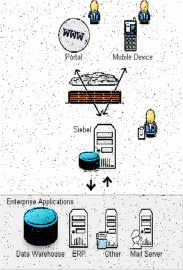Which Siebel Integration Method to Use?
·2 mins
Siebel provides multiple options to integrate with external systems. Many a time the decision of the integration mechanism is just left to the the available talent, but not on how best a particular problem can be resolved.
This does help in speedi

So how do you choose which Siebel integration method to use?
One of the right ways is of course to -
- Standardize integration options for the implementation, and lay them on the table
For e.g. if you have been using SOAP webservices everywhere, it may not really make sense to create a MQ queue for one interface (without a lot of justification of course) - Prepare a standard decision tree to rationalize integration options and streamline decisions based on requirements.
The BIG 3 questions to ask are:
- Do you really need the integration?
- How should integration fit in the business process?
- How transient is the data in the systems being integrated?
Some of the other key questions to ask can be:
- Do you need to show external data in context of Siebel data, or do you want to just provide a single window to view external data?
- What is the volume, and size of integration transaction?
- What will you do with the data once it is integrated - update, delete, read?
- Do you need data to be synchronized amongst all systems, at all times?
- Are there any transaction within Siebel dependent on (and waiting for) the integration transaction to be complete? How will the integration affect or impact the business workflow?
Add a few technology-focused questions:
- Do you want the external data to be in Siebel database?
- Will external system support integration using open standards - webservices, XML, JSON etc. Which is the preferred option?
- Can a middleware be used for integration?
- Will the external system support direct database operations?
- Are there any specific security requirements (like data encryption) for the integration?
The process of determining the answer will enforce objectivity to the integration decision and provide sufficient clarity on the end decisions.